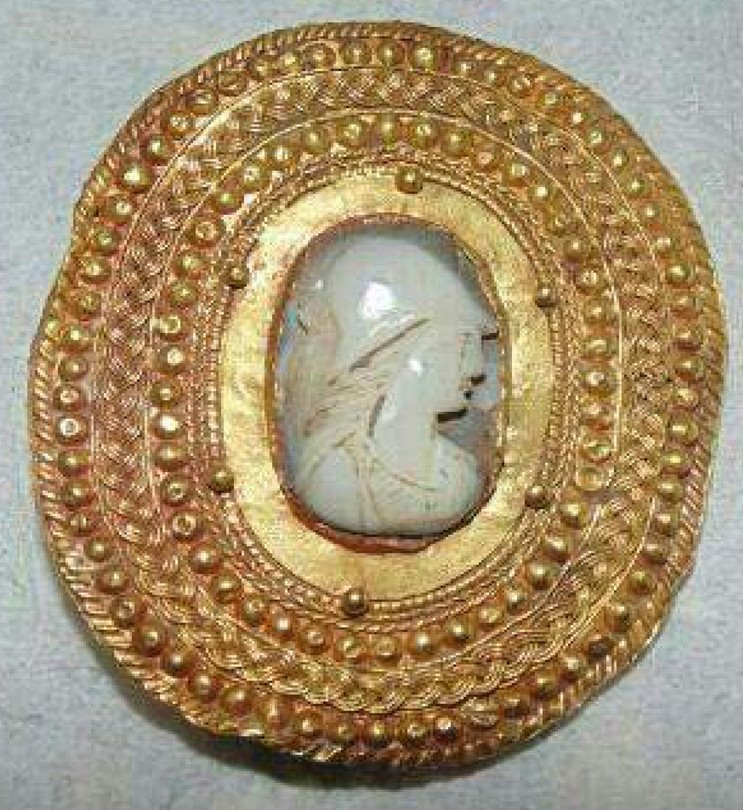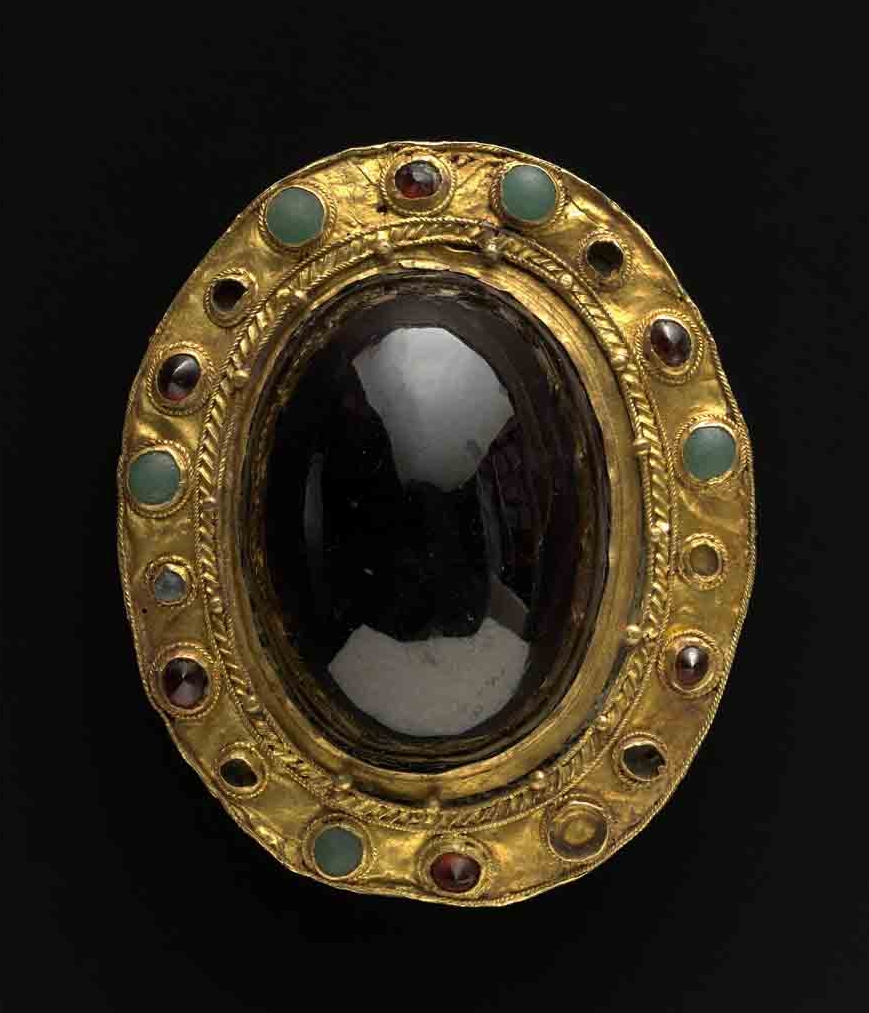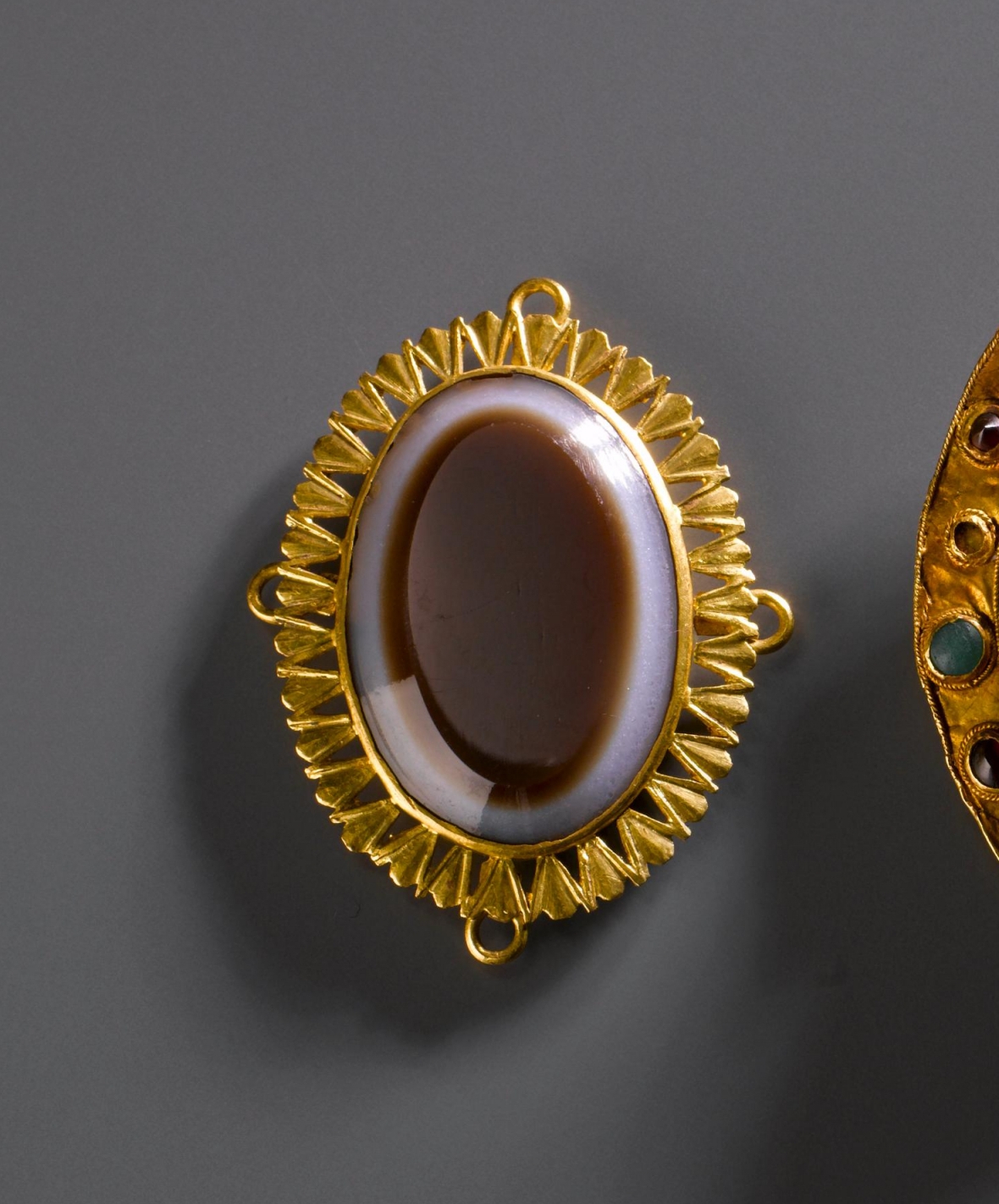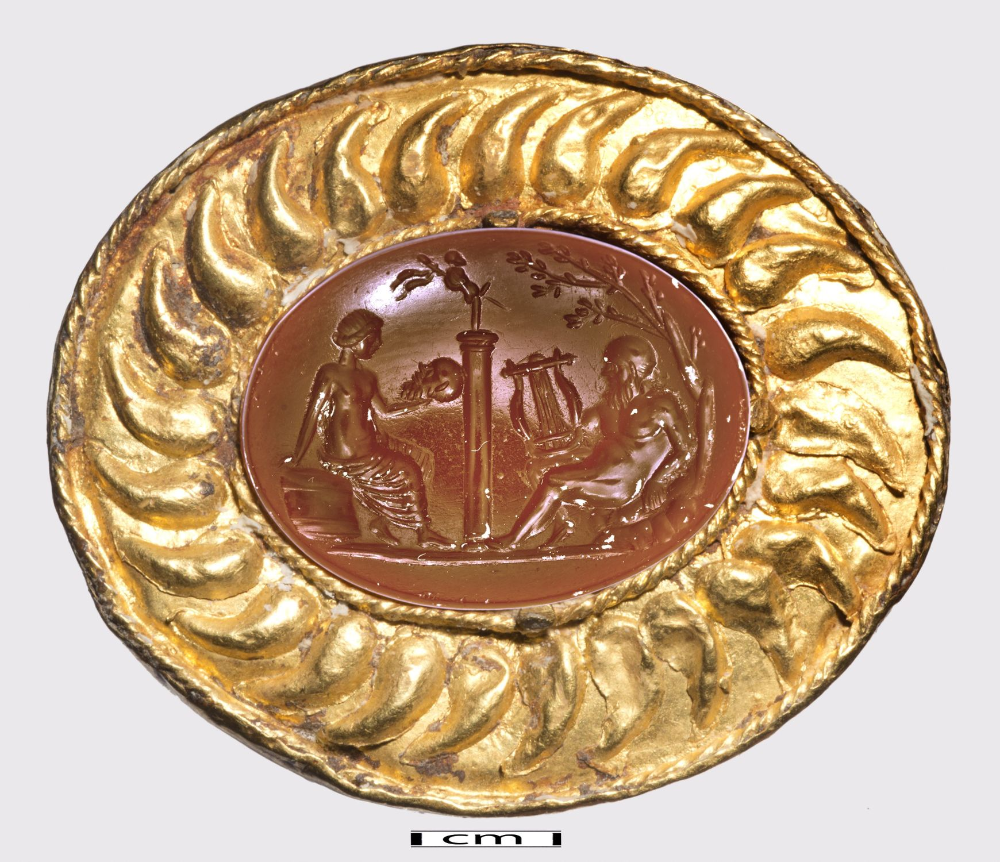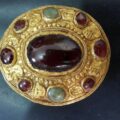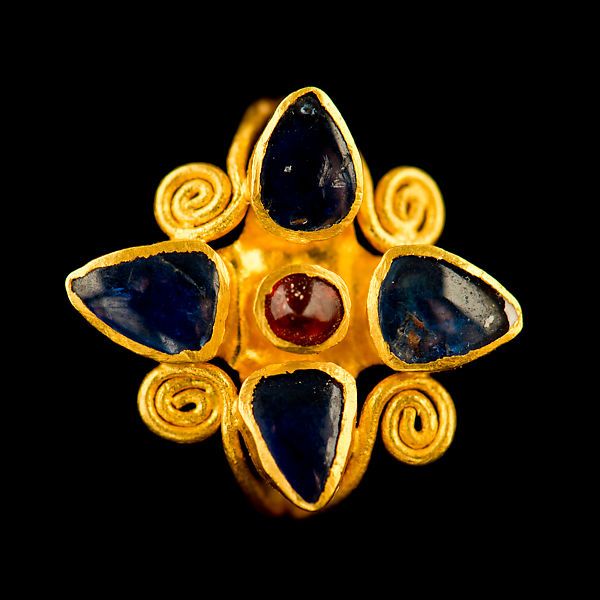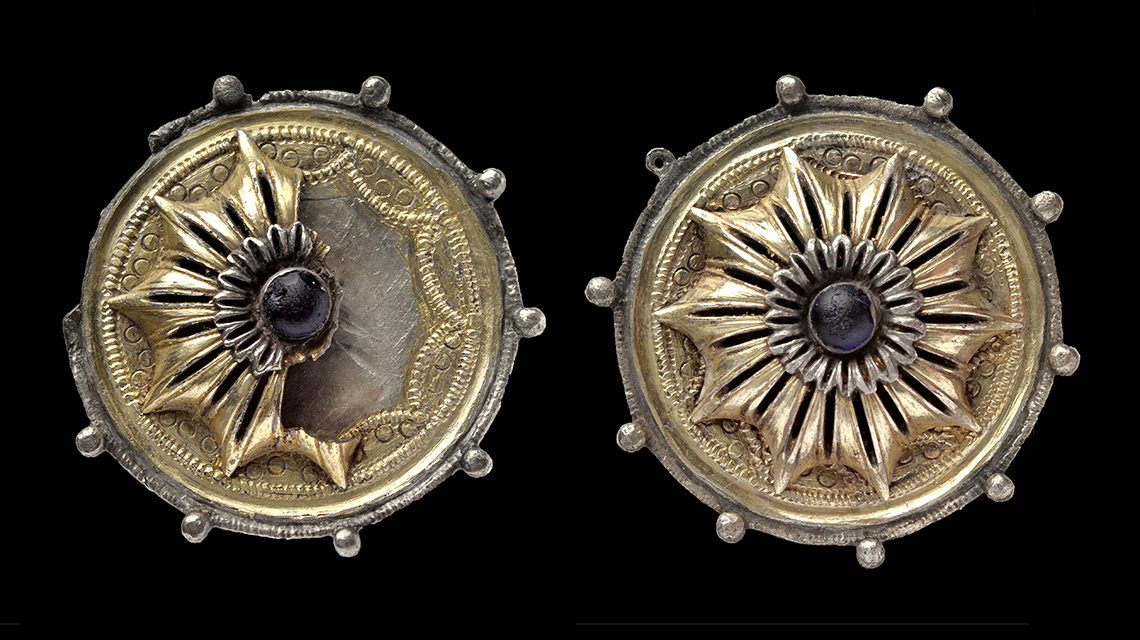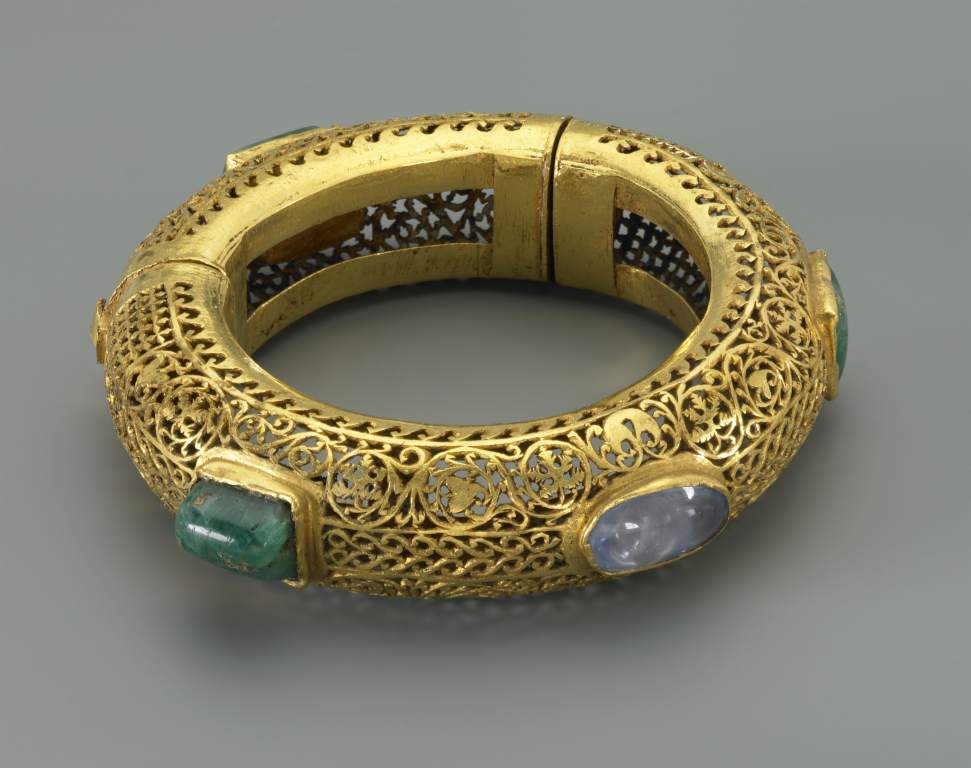




3rd-4th century brooch found in Dura Europos. In the Damascus Museum.
size 5,5 cm x 8,5 cm
An early-third-century-style gold fibula set with a dark green stone intaglio depicting Narcissus, 88mm high, found just outside the “Palace of the dux ripae”.
“The Palace was mostly excavated in the ninth season (PR 9.3, 1–96), although it was marked by an obvious mound
which attracted attention during initial exploration of this quarter of the city, exposing what turned out to be its associated baths in the fifth season, briefly reported by Hopkins (PR 5, 289). The residence was excavated by du Mesnil and F. W. Comstock during the winter of 1935–6. Brown recorded the texts and Detweiler surveyed the building (PR 9.3, v). The best-known artefact from the excavation was a spectacular gold brooch, perhaps lost during the sack of the city. It was actually found just outside the Palace, behind rooms 45–9 (Fig. 6.4; PR 9.3, 58–62, pl. 12).”
The Roman Military Base at Dura-Europos, Syria: An Archaeological Visualization
Simon James; pp. 157-161

Mentioned in:
Selected Antique Gems from Israel Excavated Glyptics from Roman-Byzantine Tombs1 Shua Amorai-Stark and Malka Hershkovitz str 105
https://www.britishmuseum.org/pdf/Gems_of_Heaven_online.pdf
“This object was found in Dura Europos. It is a golden brooch meant to be placed on the shoulder and used to affix the garment, which would be gathered by the brooch and flow down the shoulder and the torso of the wearer.
The brooch is oval in shape, an encrusted golden frame with a central carved cameo. The periphery is carved in a radiating design, curving inward in semicircles and outward in rectangular petals with a precious stone embedded in each. The middle of the brooch is a large oval stone of dark oily green color, framed by embossed golden borders in beads and braid designs. The oval stone in the middle is carved with an image of a naked man holding a snake in his left hand while resting his right on a pillar base. A smaller-sized woman is carved standing by the base and holding a floral branch. The scene is surrounded with an incised floral design, a branch which ends with fruit.”
http://www.unesco.org/culture/museum-for-dialogue/item/en/118/golden-brooch
“An important collection of jewelry is displayed in the Hall of Jewelry of the National Museum. Here we are in front of a clamp to hold clothes, with envelopes ending in large serrations, and between each serration and the other an agate stone, followed by a glass stone alternately. The clasp is covered with a dark olive-colored gemstone, engraved with a naked man carrying a snake on his left, his right hand resting on a pedestal on which a woman stands holding a bush. The scene is surrounded by a vegetal ornamental frame that ends with a large fruit.
2nd-3rd century”
https://virtual-museum-syria.org
https://i.pinimg.com/
Card from Yale – Source: Professor Emeritus Michael Fuller
Gemme da scavo dall’Oriente Roman https://www.ledonline.it/acme/allegati/Acme-05-III-12-Betti.pdf


